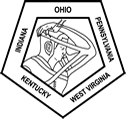<< Back to the abstract archive
Assessing Regional Sagittal Craniosynostosis Severity Using the CranioRate™ Machine Learning Toolset
Tobi Somorin, BS1, Wenzheng Tao, MS2, Janina Kueper, MD1, Angel Dixon, BA1, Nicolas Kass, BA,1 Nawazish Khan, BS1, Krithika Iyer, BSE2 , Jake Wagoner, BS2, Ross Whitaker, PhD2, Shireen Elhabian, PhD2, Ashley Rogers, MD1, Jesse Goldstein, MD1.
1. University of Pittsburgh Medical Center, Children's Hospital of Pittsburgh
2. University of Ut
2025-01-09
Presenter: Tobi J. Somorin
Affidavit:
The entirety of this submission is the original work of the research team.
Director Name: Jesse A. Goldstein
Author Category: Medical Student
Presentation Category: Clinical
Abstract Category: Craniomaxillofacial
Introduction: Sagittal craniosynostosis (SCS) can affect the frontal, central, and posterior regions of the skull. Existing literature predominantly focuses on manually defined anatomical measurements to quantify these different components. CranioRate™ is an advanced machine learning toolset able to characterize and quantify craniosynostosis severity, validated by expert surgeon ratings. Here we describe the development of regional sagittal severity scores (rSSS) using the CranioRate machine learning toolset.
Methods: Our study population included patients with SCS and normal controls. Demographic information was collected. SSS were predicted using a regression model, mapping skull shape descriptors to 54 consensus expert ratings. Principal component regression generated models of regional skull variations in patients with SCS and matched controls. These regions were divided and decomposed to assess regional components of sagittal severity. Receiver operating characteristics were conducted to assess the area under the curve (AUC).
Results: The experimental group had 195 patients with SCS, and the control group had 170 healthy patients. Demographic variables were similar in both groups. Regression patterns formed three distinct regions: frontal, central, and posterior, encompassing 94.3% of skull morphology. Another baseline region was formed from the remaining morphology. The AUC for comparing the 3 rSSS to control skulls was 0.997 for frontal, 0.998 for central, and 0.994 for posterior regions.
Discussion: The high AUC values indicate that the regional scores are highly effective at identifying the presence of SCS. CranioRate can help surgeons educate patients, conduct research, and enhance clinical care, adding regional insight to the objective sagittal severity score.



